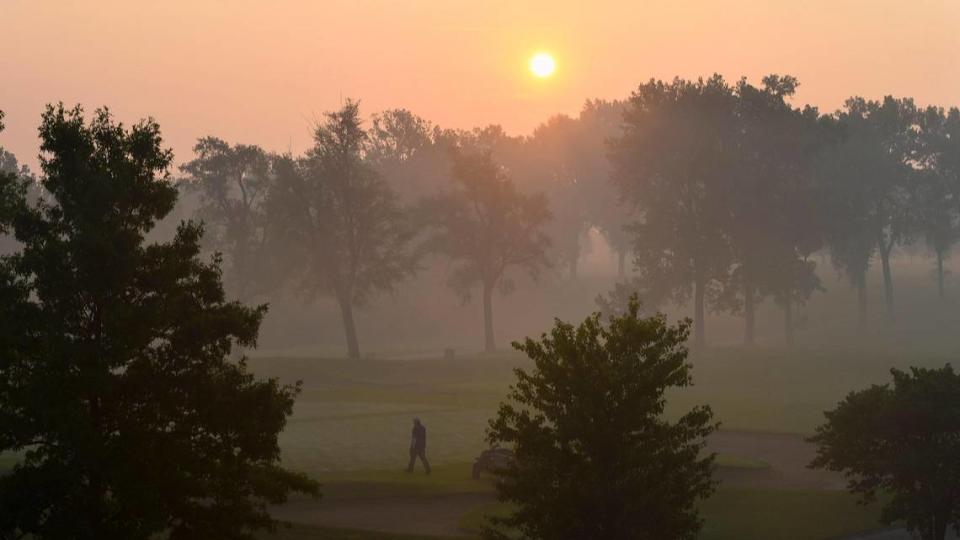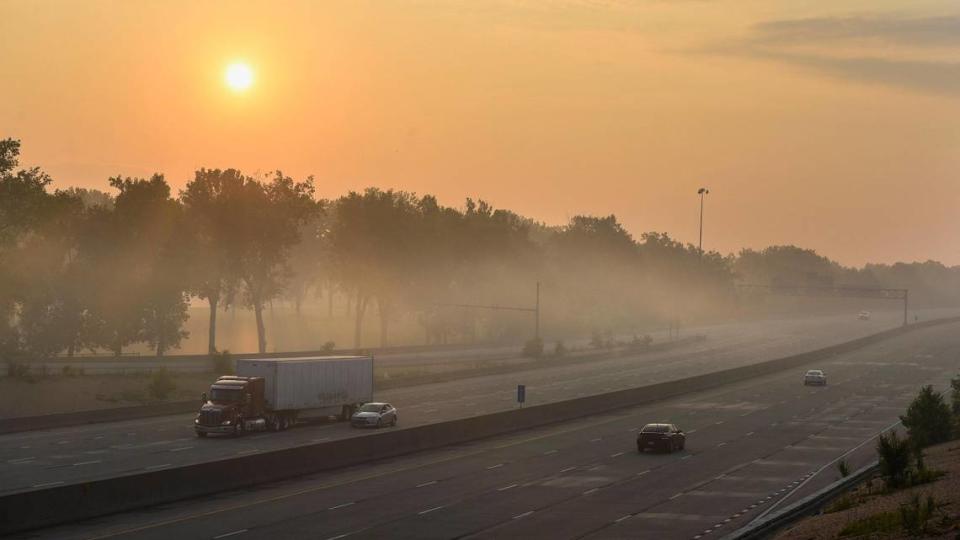Air quality alert issued for KC on July Fourth holiday; 11th smog warning this year
Even before the fireworks start exploding, Kansas City’s air quality on the July Fourth holiday will be unhealthy for some who are sensitive to smog pollution, according to the latest forecast.
The Mid-America Regional Council, which is commonly known to as MARC, has issued an orange ozone air quality alert for the 11th time this season, saying the area’s outdoor Air Quality Index is expected to exceed 100 with ozone being the primary pollution.
“Numbers are already unexpectedly high for today, July 3, and that pollution is likely to be carried over into tomorrow,” Doug Norsby, MARC’s senior environmental planner, said in a news release.
With an index at that level, an unhealthy level of ground-level ozone, also known as ozone pollution or smog, is expected for people sensitive to pollution, according to MARC.
Ozone pollution is formed when emissions from vehicles, lawn and garden equipment and other sources react in heat and sunlight. Warm, sunny weather along with low wind speeds and lack of rain increase the likelihood of poor air quality, according to the agency.
Ozone pollution can lead to a variety health problems including chest pains, wheezing, coughing, difficulty breathing, nausea and throat irritation. While people with health issues are more sensitive to air pollution, healthy adults can be affected too.
People sensitive to pollution should limit outdoor activities between 10 a.m. and 7 p.m. Everyone should considering rescheduling outdoor activities to before 10 a.m. or after 7 p.m., MARC said.
To help reduce air pollution, people should consider postpone mowing and wait until the evening to refuel vehicles. People living close to work should also consider riding a bike or walking instead of driving.
In a story posted online, MARC noted that while fireworks are a big part of the Independence Day celebration, they contribute to air pollution that can significantly impact air quality long after the firework displays are over.
That happened in Kansas City in 2020. The National Weather Service issued an air quality advisory after a night of July Fourth celebrations left a layer of firework smoke hanging over Kansas City.

“A slight inversion and light winds kept the smoke in the atmosphere longer in 2020,” Norsby said in the article. “The lingering smoke from fireworks prompted the National Weather Service to issue a statement on air quality because the smoke can pose a health risk, particularly for those with asthma. Traces of accelerants and heavy metals used to create colors can hang around in the air and water for weeks.”
Norby provided the following tips to have a safe and healthy celebration and be environmentally friendly:
Watch a community fireworks show.
Consider alternate to fireworks.
Consider hosting a block party.
Grill with a charcoal chimney or try a charcoal alternative.
Delay grilling on ozone alert days.
Attend a community parade.


